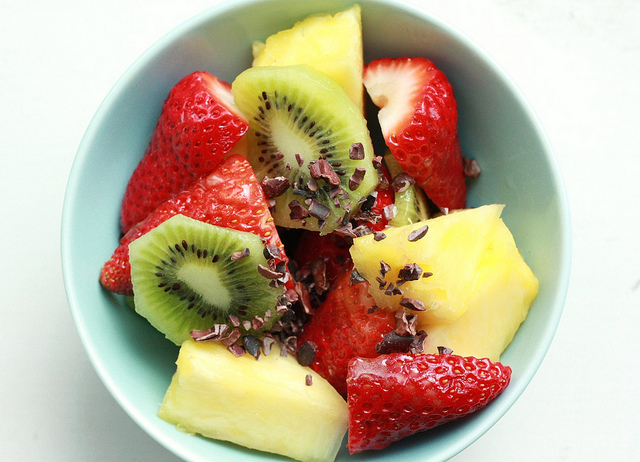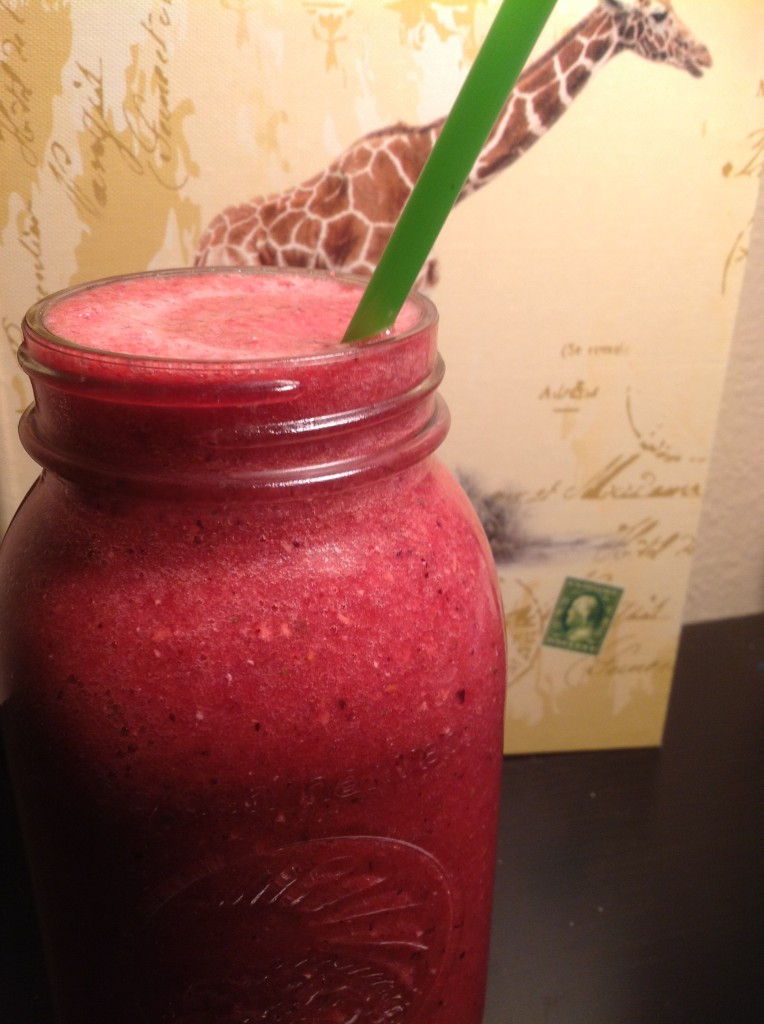 We’ve all been told a million times how important a well-balanced diet is. If it seems like a hopeless cause to achieve a zen like system of eating, here’s an advice that captures it all in just three words: eat the rainbow. A variegation of fruits and vegetables is essential to maintain a healthy immune system and keep us fit and strong. Surprisingly simple, but scientists have discovered that different phytochemicals, the compounds that give fruits and vegetables their color, provide a myriad antioxidants as well as other important health benefits. Phytochemicals are destroyed by cooking; and a deficiency can increase the risk of preventable diseases, so it is always best to enjoy your fruits and vegetables raw as much as humanly possible. By eating a rainbow of delicious plant foods, you are quite literally building your health.
We’ve all been told a million times how important a well-balanced diet is. If it seems like a hopeless cause to achieve a zen like system of eating, here’s an advice that captures it all in just three words: eat the rainbow. A variegation of fruits and vegetables is essential to maintain a healthy immune system and keep us fit and strong. Surprisingly simple, but scientists have discovered that different phytochemicals, the compounds that give fruits and vegetables their color, provide a myriad antioxidants as well as other important health benefits. Phytochemicals are destroyed by cooking; and a deficiency can increase the risk of preventable diseases, so it is always best to enjoy your fruits and vegetables raw as much as humanly possible. By eating a rainbow of delicious plant foods, you are quite literally building your health.
Red, purple, and blue-hued foods are all pigmented by anthocyanins. Anthocyanins relieve pain, maintain heart function, and are neuroprotective, meaning they’re good for your memory. Reds can lower blood pressure, reduce the growth of tumors, and lower cholesterol. Blues and purples aid in healthy digestion, fight inflammation, and improve the absorption of calcium and other minerals. Cherries, figs, and tomatoes are all high in potassium and can help lower blood pressure; people with kidney disease should watch their intake of these foods because of a need for decreased potassium in the diet. Red foods include: beets, rhubarb, pomegranate, raspberries, red onion, and strawberries. Some blues and purples are: blueberries, huckleberries, raisins, eggplant, purple cabbage, grapes, and blackberries.
Orange and yellow foods get their bright sunshiny color from beta-carotenoids–required to maintain healthy skin. Beta carotene helps protect plants from solar radiation, and is thought to perform a similar function in the human body. Oranges and yellows can reduce the risk of prostate cancer, promote collagen formation, and works together with magnesium and potassium to fight strong bones. These foods also contain high levels of vitamin C, which the human body cannot produce itself. Some oranges and yellows are: apricot, pineapple, peach, corn, carrots, grapefruit, canteloupe, and yellow peppers.
Green fruits and vegetables are tinted via chlorophyll. Greens can regulate digestion time, reduce the risk of cancers, boost immune activity, and lower cholesterol. Green foodstuffs include: pears, avocados, kiwis, limes, grapes, apples, artichokes, kale, and spinach.
White, tan, and brown fruits and veggies are not to be forgotten! They achieve their coloration through anthoxanthins, which lower heart disease, activate B and T cells, harmonize hormone levels, and reduce the risk of cancers. White foods entail: bananas, dates, white peaches, cauliflower, white corn, parsnip, and brown pears.
It is crucial to eat as many colors as possible on a daily basis when eating for health–but some days you may need more of a certain color than another (I myself have weeks where I cannot get enough red, orange, blue, etc.). Listening to your body is part of finding balance, but the first step to knowing what you need is to begin by making produce a daily priority. Fruits and vegetables are the key to success, because true happiness is born at a cellular level–so fuel your body and get colorful!
A fantastic tool to measure your healthful eating is a website called Cronometer.com. It measures the amount of nutrition you get in almost any food, and I love watching the numbers go up as I add in more fruits and veggies!

Awesome Antiox Smoothie!
1/4-1/3 lb frozen berries (strawberries, blueberries, raspberries)
Seeds from 1 pomegranate
1 1/2 green pear
Small handful fresh orange mint
Water to desired consistency (I used a little over 1 cup)
1. Put all ingredients in your blender.
2. Blend!
3. Either enjoy as is or strain into a less fibrous juice drink.
Also by Jessi: Healing Magic of Mushrooms
Sweet or Dangerous? The Sugar Question
___
Photo: SweetOnVeg via Flickr; Jessi Ferguson




